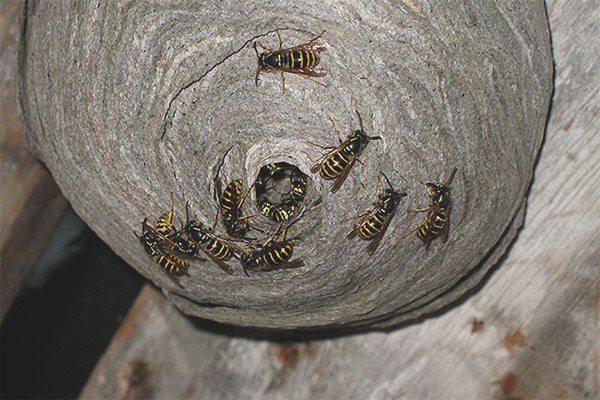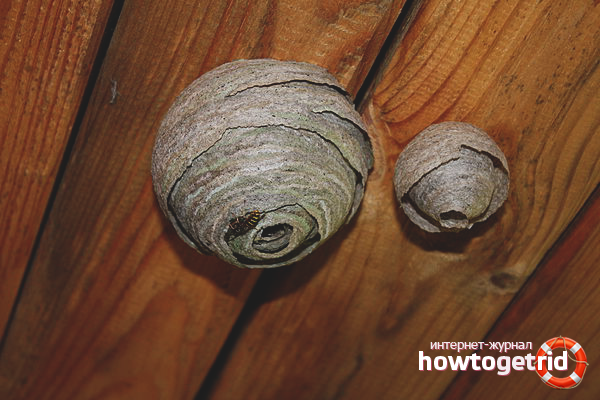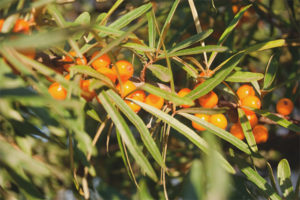The content of the article
Hornets never leave the nest unguarded. Aggressive insects throw at people and animals who dare approach their home, even if the victim just passed by. An adult dies after 10–12 bites, and a 3-5 is enough for a child. How to get rid of the hornets who settled in the attic or in the yard? Destroy the nest. To act carefully and wisely, because angry insects pounce on a stranger instantly and do not retreat until they eliminate the threat.
Equipment and first aid
The hornets have a long and sharp sting that is able to penetrate even thick denim. A person who is about to get close to the nest must protect himself by wearing a protective suit. These beekeepers wear when honey is pumped out. Face cover with a helmet.
You will need thick long gloves, because a person with allergies to poison of hornets needs just one bite to cause Quincke’s edema or anaphylactic shock.What if there is no special suit? Wear a few pants, a thick sweater and a sweater, wrap the neck with a tight scarf, not leaving even small crevices. Find an old hat and attach a piece of curtain to it, turning it into an improvised safety helmet.
Put rubber boots or high winter boots on your feet. No smack or sandals. Pants are tucked into socks, and then into boots, so that predatory insects do not have access to the body.
Before starting the operation, consider options for retreats. It is possible to put a barrel or an iron bath filled with water in the courtyard. A person who was attacked by hornets will be able to jump into a container with liquid and lie low for 30-40 seconds. This is enough to make the angry guards retreat.
The person who was stung by a hornet needs to be given first aid. Act quickly to stop the spread of poison through the body, so the hand should be:
- a bottle of peroxide, ammonia or tincture of calendula;
- antihistamine packaging like Suprastin or Diazolin;
- a roll of cotton wool;
- a bowl of ice wrapped in cloth.
A cotton swab moistened in an alcohol-containing agent is applied to the bite, and an antihistamine tablet is given to the injured to prevent anaphylactic shock.Ice is then applied to swollen soft tissues to stop the spread of edema.
How to detect the nest
There are a lot of predatory insects in the yard or near the apiary, but it was not possible to find the nest? You will need a tennis racket and a thin red thread. Get close to any hornet and hit him to stun. Choose a victim, flying alone, otherwise the other individuals will rush to the offender.
While the hornet does not understand anything, tie a thread to its foot or abdomen. Cut a small piece so that it does not catch on a flower or tree, otherwise the insect will not reach the nest. Do the trick with a few hornets, and then trace where they go. The red thread will show where the queen hid and the nest itself.
Important: You can not take winged predators with their bare hands. Only in rubber or thick cloth gloves, because an insect can sting at any time.
Little problem
In the evening, when it gets dark, you need to go to the nest and assess its size. In some houses live up to 700 adults, and the height of such structures reaches 1 m. Only disinsectors can cope with large families, but you can fight with small ones on your own.
If the nest is not larger than a soccer ball, it is recommended to drown it.Take a bucket of water, grab a ladder and go to the settlement of hornets. Carefully immerse the cocoon in the liquid, without removing it from the branch or ceiling. Keep a bucket for 10–20 minutes, and it is better to put it on the stairs and wait.
Hornets will not understand what happened if you do everything quickly. The walls of the nest will dissolve in water, and the insects themselves will drown, not having time to fly out.
Fire is the solution
The cocoons of the hornets, which are more buckets, are burned. The procedure is carried out in the evening, when insects become lethargic and not so aggressive. Tighten the nest tight bag. The cover must be checked to ensure that there are no holes in it. The neck of the bag is tied, the cocoon is cut off with a sharp knife from a beam or a branch.
Important: Sometimes hornets begin to buzz and, trying to get out, sting a cover. Insects can get into the person cutting the cocoon if he leans against the bag with the body or becomes too close.
Soak striped aggressors rag soaked in liquid ammonia. It is thrown into the bag, and the hornets subside after a few minutes.
On the street they make a fire, into which they throw a nest together with its inhabitants. Remove the cocoon from the bag is undesirable.It is recommended to move away from the fire by 2–3 m and wait until the house of striped aggressors turns into ashes.
It is not necessary to remove the nest located on an iron base. If there are no flammable objects around the cocoon, it is poured over with kerosene or gasoline. Wait until the liquid is absorbed into the wall, and then shove a burning torch from a wooden stick or newspaper inside. And quickly move away to a safe distance, because some individuals are able to get out and attack the person who destroyed their homes.
Insecticides against hornets
There is a third option for the destruction of dangerous insects. You will need "Dichlorvos" or another pesticide, designed to combat wasps. To pull a huge plastic bag over the nest. Spray into the poison, not sparing. Polyethylene cover tie, wait until the hornets die.
The nest is cut off, not taken out of the bag, and thrown into a landfill. You can burn it.
How to get rid of the hornets who settled in the hollow of a tree? Buy a can of toxic chemicals designed to kill wasps, prepare a solution of clay or putty. Spray the tool into the hollow, and then quickly cover all the holes from which the hornets can fly out.
Important: Liquid insecticides are injected with a thick needle into a tree trunk.The toxic chemical is quickly spread throughout the plant, droplets of poisoned juice fall on the legs and wings of insects, and they die.
Great danger
Large nests are difficult to drown or burn without teasing a swarm. First, they destroy insects living in huge cocoons, and then get rid of the structure.
Stage 1
It will take a lot of transparent plastic bottles with a volume of 2 to 5 liters. Make a cross-shaped incision in the lids, bend plastic “petals” inside the container to form a small hole.
Pour sweet water with vanilla, jam or honey to the bottom of the bottles. Choose a strong-smelling bait that will attract adult hornet. Insects enter the container through a hole in the lid and remain inside because they cannot find a way out.
Traps with a large number of striped aggressors are thrown into the fire. You can shove a burning newspaper inside, completely closing the hole. Drowning bottles is not recommended. Hornets float to the surface, and some aggressors are able to find a way out, dry off and attack the enemy.
Stage 2
When the number of adults decreases,switch to larvae and young insects. Tin cans or other containers filled with minced meat are placed next to the nest. Not necessarily fresh. Ground chicken offal or fish will do as well.
The first 2-3 days of insects are lured. Hornets carry meat to the nest to feed the young larvae. For 3-4 days, arsenic or Parisian herbs are added to the mince. On 1 kg of meat preparation 10–20 g of poison. Stir and arrange in jars.
To work with toxic chemicals, be sure to wear rubber gloves. The cans are tightly closed, leaving only small holes into which the adult hornet will crawl. Lures put in hard to reach places. You can not mince tasted a pet or a child.
From the poisoned treat die young individuals and soldiers guarding the queen. Surviving hornets destroyed "Dichlorvos." Insect repellent sprayed inside the nest. The holes in the cocoon are sealed with putty or clay so that striped predators do not get out of the trap.
A nest with dead hornets is carried to the garbage heap and burned.
Good time
Striped aggressors well masked cocoon? If insects get along well with humans, large nests do not touch until winter. Hornets leave the summer house before the onset of the first cold weather and hibernate. In December or March, an empty cocoon is removed and burned, and all the gaps in the room or in the attic are sealed with cement so that insects do not get inside.
Non-standard way
No time to lure and feed the Hornet stuffing with arsenic? Aggressive individuals are lured out of the nest with a vacuum cleaner. You will need an old model with a fabric dust collector and a long tube.
Technique include and close to the entrance to the cocoon. Hornets, sensing danger, begin to attack the plastic pipe, which sucks them inside the dust collector. What to do with caught insects? You can quickly shake out the bag and burn it or leave it inside the vacuum cleaner by plugging the tube with a rubber stopper or a rag.
Hornets are dangerous neighbors.They are aggressive and large, and one bite of a predatory insect can kill an adult. Fighting striped invaders must be carefully, carefully thinking through each step. And if there are a lot of hornets, and they carefully guard the queen and the nest, it is better to call a team of experienced pest controllers.
Video: how to destroy a hornet's nest












To send